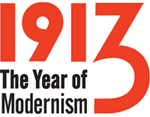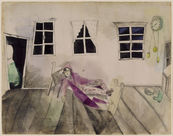Poetry Becomes Image
Poetry Becomes Image
Stéphane Mallarmé’s poem Un coup de dés jamais n’abolira le hasard—published first in 1897, in the multilingual magazine Cosmopolis, and then as a book in 1914—was a radical reorganization of both poetry and the printed page. In the 1914 edition, the traditional unit of poetry, the verse, is exploded as the poem expands across the two-page spread. Mallarmé used the blank space of the page to give rhythm to his poetry and visual, concrete existence to his verse.
The visualization of poetry takes a different direction in Guillaume Apollinaire’s Calligrammes. Whereas Mallarmé created abstract visual patterns, Apollinaire transformed his verses into recognizable images that give visual form to the text. These lyrical ideograms use typography as a pictorial element, creating a poem that is both image and text, with multiple associations and interpretations.
Visuality takes yet another turn in Futurist and Dadaist poetry. In works such as Filippo Marinetti’s Zang tumb tuuum, published in 1914, typography creates a shock that reproduces visually the textual destruction of syntax, grammar, and continuity.

















